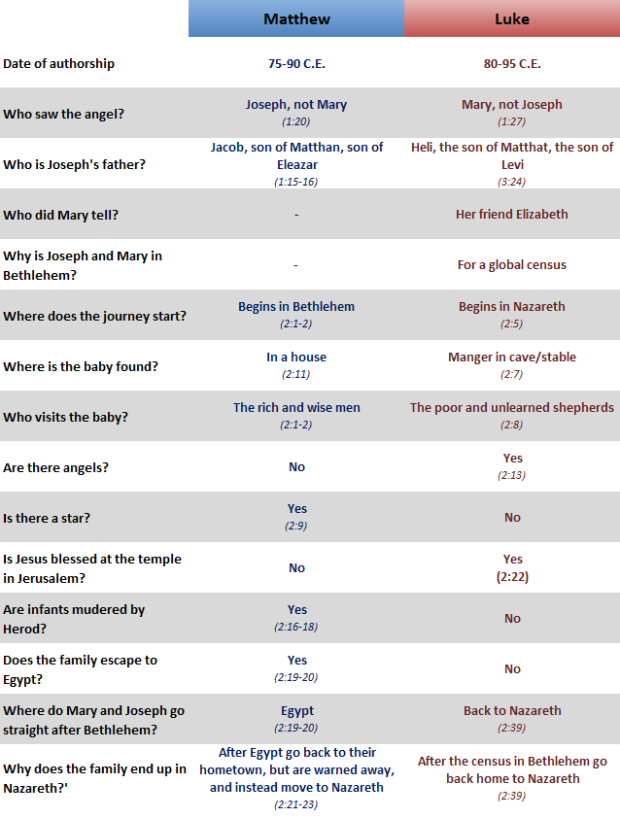The “Nativity Story” we are so familiar with is really two separate stories that have been woven together to make a “third.”
When you look at each tale individually you will note that both are rather different, containing mostly unique elements that are not shared by the other. In fact, many (but certainly not all) academic biblical scholars would argue that they are so different they are impossible to reconcile.
It is because of differences like these that Raymond Brown, a leading Catholic New Testament scholar admits that of the options we have, “one must be ruled out… [that is] that both accounts are completely historical.” 1
Why is this the case? E. P. Sanders, a widely respected New Testament scholar says this is because “on many points, especially about Jesus’ early life, the evangelists were ignorant… they simply did not know, and, guided by rumor, hope or supposition, did the best they could.” 2

1. Brown, Raymond, ‘The Birth of The Messiah,’ p 25
2. W.D Davies and E. P. Sanders, ‘Jesus from the Jewish point of view’, in The Cambridge History of Judaism ed William Horbury, vol 3: the Early Roman Period, 1984.
